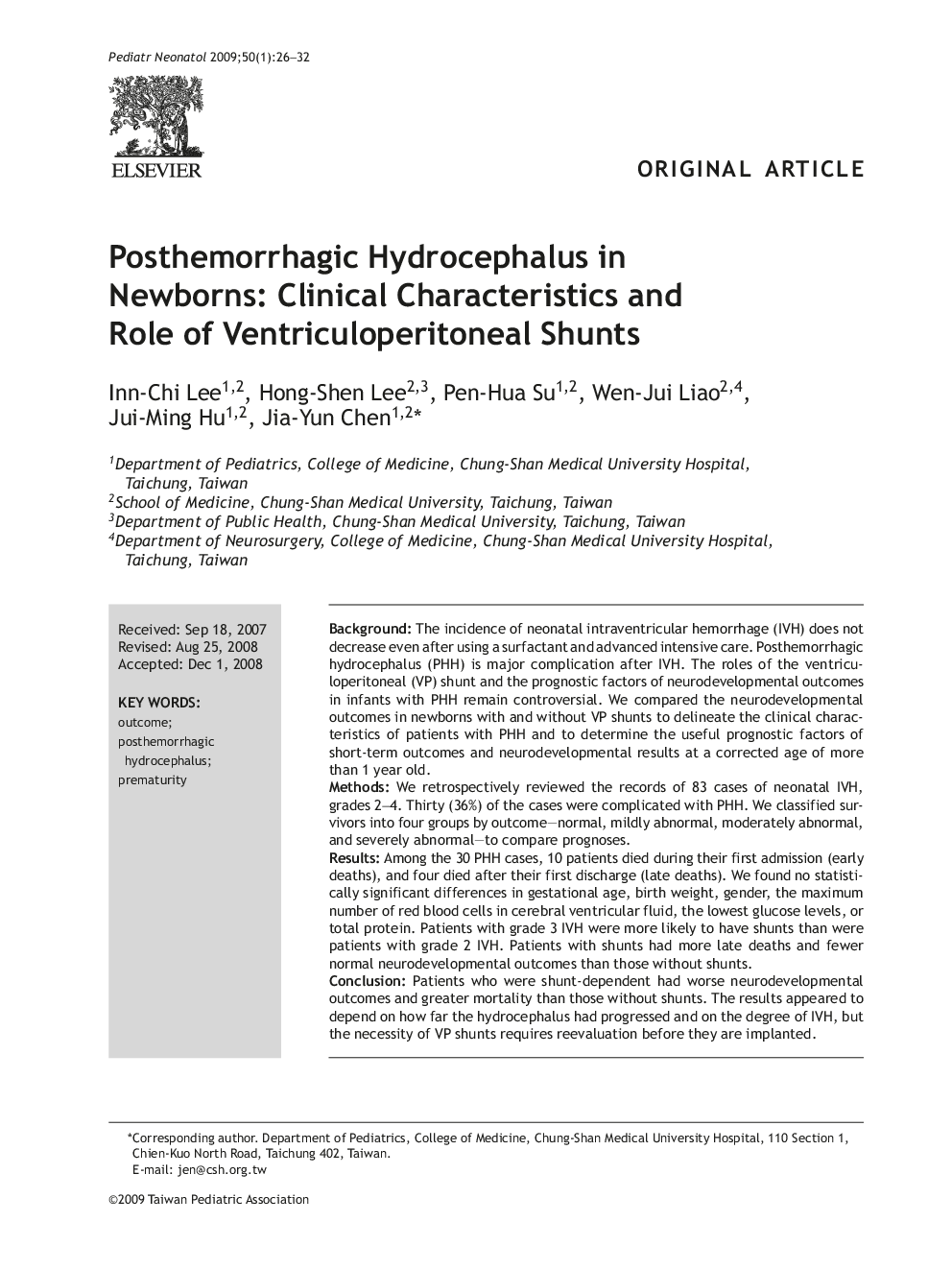| کد مقاله | کد نشریه | سال انتشار | مقاله انگلیسی | نسخه تمام متن |
|---|---|---|---|---|
| 4175644 | 1276206 | 2009 | 7 صفحه PDF | دانلود رایگان |

BackgroundThe incidence of neonatal intraventricular hemorrhage (IVH) does not decrease even after using a surfactant and advanced intensive care. Posthemorrhagic hydrocephalus (PHH) is major complication after IVH. The roles of the ventriculoperitoneal (VP) shunt and the prognostic factors of neurodevelopmental outcomes in infants with PHH remain controversial. We compared the neurodevelopmental outcomes in newborns with and without VP shunts to delineate the clinical characteristics of patients with PHH and to determine the useful prognostic factors of short-term outcomes and neurodevelopmental results at a corrected age of more than 1 year old.MethodsWe retrospectively reviewed the records of 83 cases of neonatal IVH, grades 2-4. Thirty (36%) of the cases were complicated with PHH. We classified survivors into four groups by outcome—normal, mildly abnormal, moderately abnormal, and severely abnormal—to compare prognoses.ResultsAmong the 30 PHH cases, 10 patients died during their first admission (early deaths), and four died after their first discharge (late deaths). We found no statistically significant differences in gestational age, birth weight, gender, the maximum number of red blood cells in cerebral ventricular fluid, the lowest glucose levels, or total protein. Patients with grade 3 IVH were more likely to have shunts than were patients with grade 2 IVH. Patients with shunts had more late deaths and fewer normal neurodevelopmental outcomes than those without shunts.ConclusionPatients who were shunt-dependent had worse neurodevelopmental outcomes and greater mortality than those without shunts. The results appeared to depend on how far the hydrocephalus had progressed and on the degree of IVH, but the necessity of VP shunts requires reevaluation before they are implanted.
Journal: Pediatrics & Neonatology - Volume 50, Issue 1, February 2009, Pages 26-32